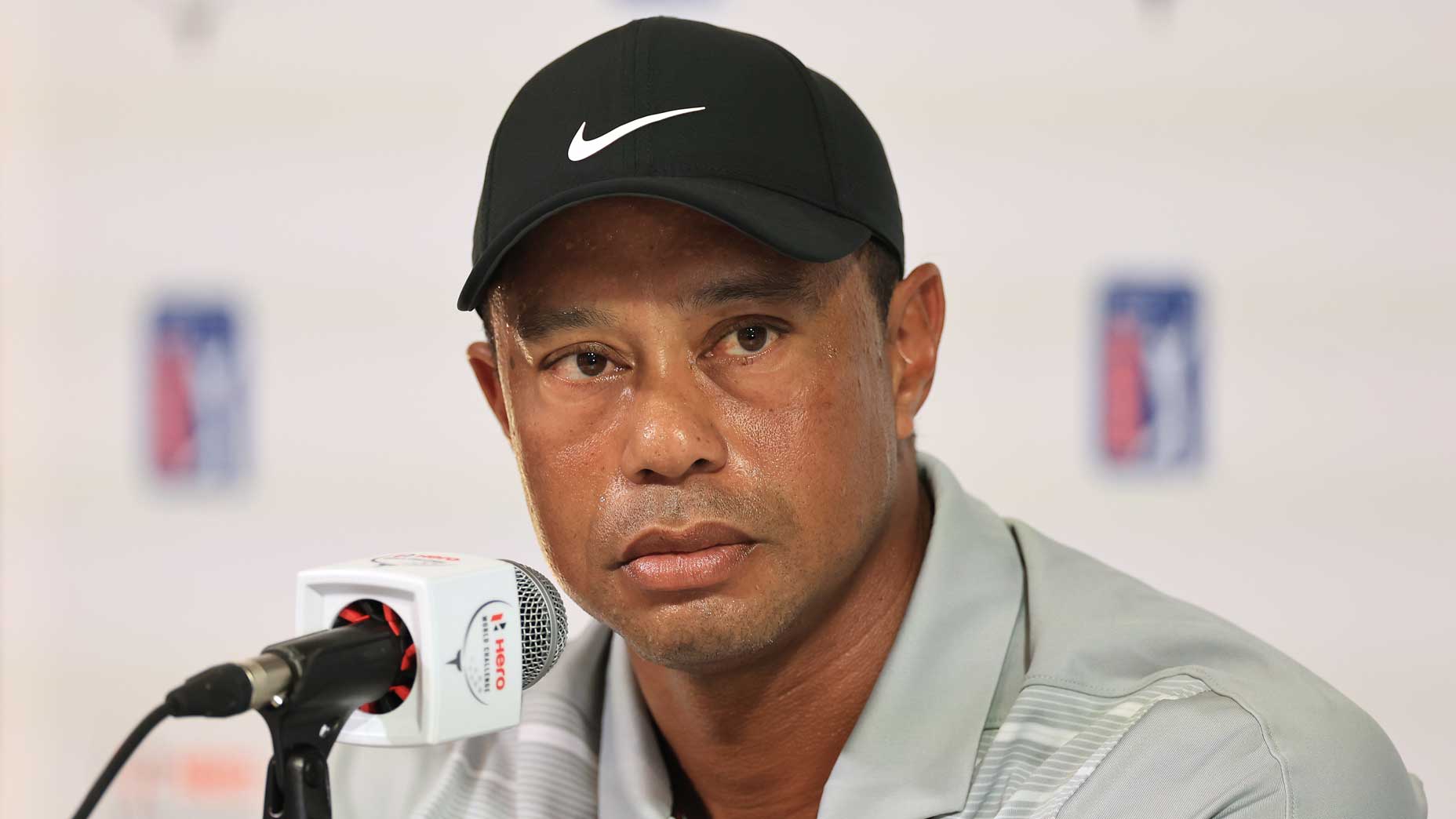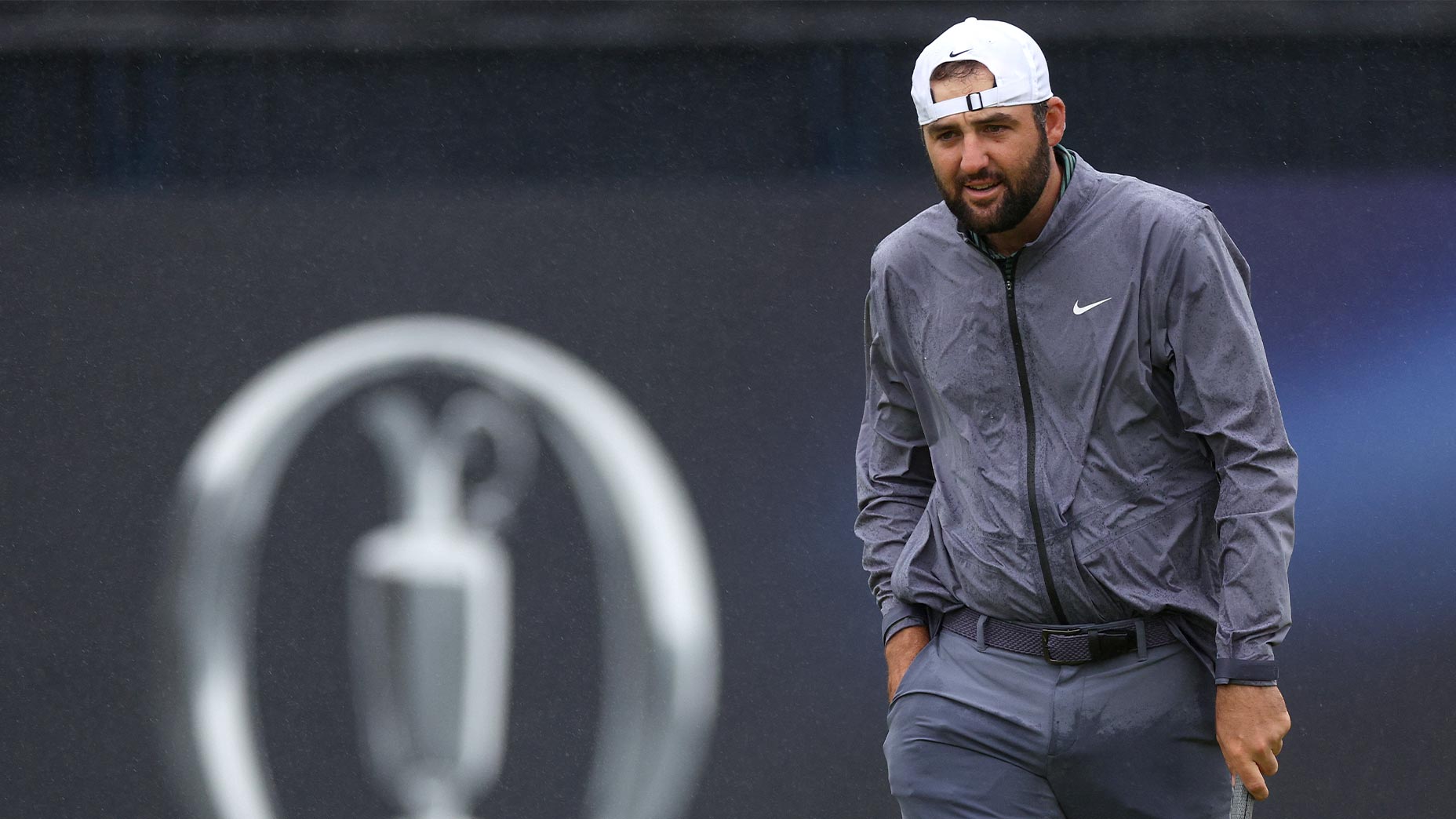Tiger Woods dazzled his peers on the golf course. Next up: the boardroom

Tiger Woods at the Hero World Challenge earlier this week.
getty images
There are Tiger Moments (the big “M” variety), and then there are Tiger moments (little “m”).
The Moments are the iconic shots that are recycled in 15-second clips on social media or that resurface on tournament-broadcast look-backs; they don’t require much introduction because they’re burned in golf fans’ collective memory: the Putt at Torrey; the Chip-in at Augusta; the Snake at Sawgrass, et al. And the little-m moments? They’re the less heralded shots that demanded no less skill or artistry from Woods but that required a trained eye to fully appreciate their greatness.
Scottie Scheffler witnessed a little-m moment. It came when he was playing alongside Woods in the final round of the fall-edition 2020 Masters. Woods was well out of contention as he and Scheffler began the back nine, and at the 12th, things got uglier still for Woods. On the devilish par-3, Woods found Rae’s Creek three times en route to a shocking 10, the highest single-hole score of his professional career.
“Anybody else would kind of say, oh, whatever, I’ve already won this tournament four, five times, and just kind of pack it in for the last six holes,” Scheffler recalled Wednesday from Woods’ event, the Hero World Challenge, in the Bahamas. But that’s not how Woods rolls. Instead, he played the closing six holes in five under par to salvage a 76 and finish at one under for the tournament.
You may not remember any specific shots from that stretch (CBS didn’t show many of them), but Scheffler does: Woods’ tee shot at the par-3 16th, a perfectly flighted short iron that came to rest 18 inches from the hole. “To this day,” Scheffler said, “it’s the purest iron shot I’ve ever seen on 16. He’s so competitive and he’s so driven and he’s so good — he’s different. He’s different than the rest of us.”
If the world’s No. 1-ranked player sounds in awe of 47-year-old, surgically-welded-together Tiger Woods, that’s because he is. And not just because of Woods’ shotmaking prowess. As the future of the men’s professional game hangs in the balance, the next generation of Tour stars is now looking up to Woods in a less glamorous, albeit arguably no-less-important, role, as a board-room influencer and policy shaper.
This is a new duty. For most of his career, Woods has let his clubs do the talking and paper-pushing. But then along came a rival tour, and dissension among the world’s best players, and big, thorny questions about the PGA Tour’s future, and clandestine meetings between Tour brass and the Saudis, and a bombshell framework agreement and…well, a blindsided Woods had seen and heard enough. Time to flex his clout.
On Aug. 1, the Tour announced that Woods was joining the Tour policy board as its sixth player director. Included in the announcement was this proclamation from embattled Tour commissioner Jay Monahan: “I am committed to taking the necessary steps to restore any lost trust or confidence that occurred as a result of the surprise announcement.”
Translation: Monahan’s deceit had left Woods and his Tour brethren seething, and Woods was now in a position to ensure that the players would never again be left in the dark. As Woods said this week of the Tour’s covert dealmaking, “Can’t happen again and won’t happen again.”
It’s still stunning that the future of the Tour was decided without input from the guy most responsible for the Tour’s present-day success. But here we are and now there Woods is: attending meetings, taking calls and pecking away at his keyboard to make sure that, effective immediately, the Tour gets things right. “Lot of time on the phone, emails, Zoom calls, phone calls, whatever it may be,” Justin Thomas said of Woods earlier this week. “He doesn’t take it lightly. Obviously, he’s spoken to it, but it was an honor for him to kind of get the torch passed to him from Arnold and Jack. So I think he’s looking at it as he wants to kind of pass that to whatever the following generation is.”
Thomas called Woods’ jump to action “inspiring,” which is a common sentiment on Tour. Woods has never starved for admiration from his peers, but now he’s earning it less so with his play and more so with his politicking. Said Scheffler: “He could easily sail off into the sunset, never touch a club again, never do anything again, just go live his life and enjoy kind of the second half of his life and do whatever, hang out with his kids. … It’s pretty inspirational for the rest of us that are involved in the game with what he’s been doing right now.”
Jordan Spieth is a newbie to the policy board — he filled Rory McIlroy’s vacancy just a couple of weeks ago — but has had his finger on the pulse throughout this tumultuous stretch through conversations with Patrick Cantlay and other board members. Of Woods, Spieth said this week, “I know he doesn’t sleep a lot, but he’s spending most of his waking hours thinking about how to better the PGA Tour for the players.”
Spieth then said something else interesting about Woods: “He’s not stepping in to throw influence anywhere; it just comes with him when he walks in the door. He’s a listener, and he has a lot of experience. He’s seen the PGA Tour go through a lot of different changes over almost 30 years for him now. He comes with that kind of perspective as well as somehow a way of recognizing what can be good for the PGA Tour and its entire membership when he’s never been an ordinary member, but it doesn’t seem lost on him.”
Some of those “ordinary” members have been feeling slighted. Players like Lanto Griffin, who believes the new signature-event structure of the Tour makes it unfairly difficult for mid- and lower-tier players to ascend the ladder. Whether or not Griffin’s gripe has merit, soothing the Tour’s middle class while continuing to line the pockets of its stars will be one of the most pressing issues Woods and his fellow board members will need to address in the coming months.
Surely Woods is also weighing other questions, such as how he’d like the Tour to look in five or 10 or even 50 years. Woods is a legacy guy. Paramount to him will be maintaining the Tour’s competitive integrity and ensuring it remains the place to play. He wants those 82 wins of his to mean as much in 2123 as they do in 2023. Thomas, likely Woods’ closest friend among active players, will tell you that when Woods thinks about the future of the Tour, he also might be thinking about his son, Charlie, who is a competitive high school player in South Florida.
“I’m sure he has some visions in his head of, oh, I would love to have Charlie be playing out here, and then the kids he’s playing against,” Thomas said this week. “It’s bigger picture. I think as little as he’s playing, it’s very clear that the decisions he’s making and thoughts that he has isn’t for his own good, it’s for the betterment of the game.”
Whatever path Woods believes the Tour should follow, he’ll need to convince more than just his fellow player directors. Tour management will continue to hold sway. Assuming the Tour’s deal with Saudi Arabia’s Public Investment Fund comes to fruition, the likes of PIF’s director, Yasir Al-Rumayyan, also will have a strong voice. As will any other investor(s) that backs the Tour, which, according to Monahan’s remarks at a conference earlier this week, also seems likely to materialize. All parties will have ideas and opinions and road maps, and all will be seeking a tidy return.
Woods understands that. He also understands his primary mission: take care of his own. As Woods said earlier this week, “Without the players, there is no Tour.”















